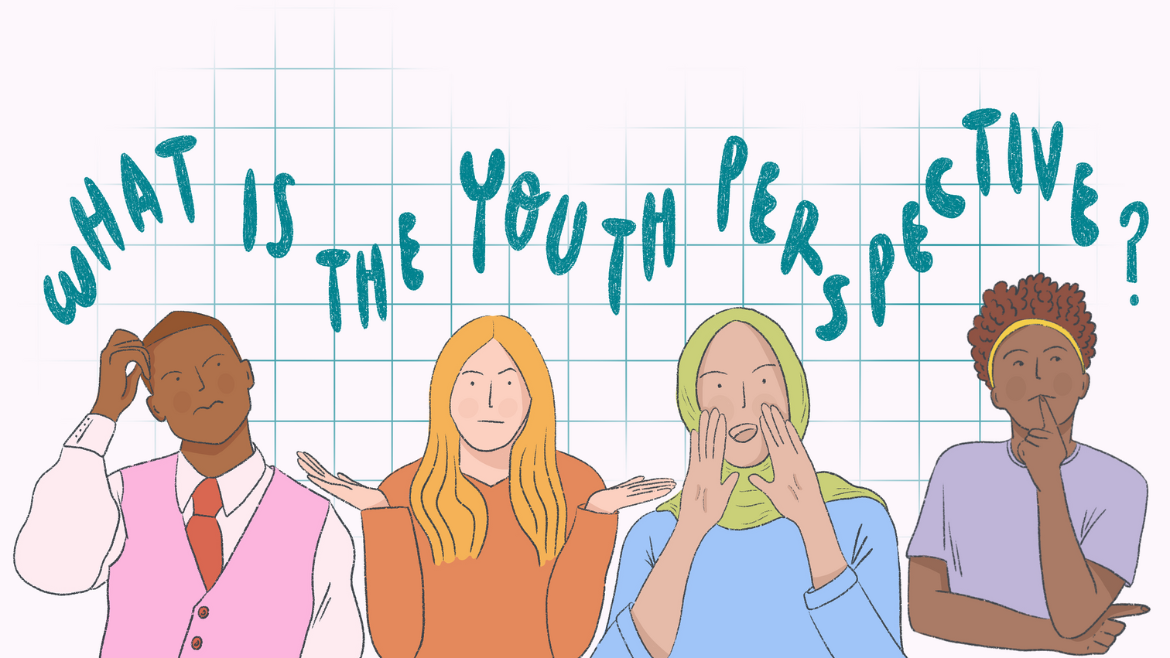
Illustration by Daniela Nunes
What is the youth perspective?
by Alice Bergholtz
The Council of Europe is buzzing. Working with and for young people is something the Organisation started with its foundation 75 years ago. In 1972, its unique youth sector was created and it has since been co-managed by youth representatives and the governments of member states. Today, there is a new element of curiosity connecting the long-standing European institution with young people and bringing a “youth perspective” to all aspects of its work. In meeting rooms, the corridors, workshops, over coffee breaks – yes, really all over – people are asking: what is the youth perspective?
It started with the Council of Europe Summit in Reykjavik last May. When Iceland took over the Presidency of the Committee of Ministers, they announced that they would be hosting the 4th Summit of Heads of State and Government of the Council of Europe, the first one in almost 20 years. Youth organisations and networks all over Europe responded with demands to be included in setting the agenda of the summit and at the summit itself. Young people argued for the need to strengthen citizens’ access to rights and resources offered by the Council of Europe, to increase the support for young people forced to live through war in Ukraine and other conflict areas, the need to improve transparency and communication of the institution and for young people to have an increased mandate when discussing policy that will affect our lives. The slogan that kept repeating: youthless policy is useless policy.
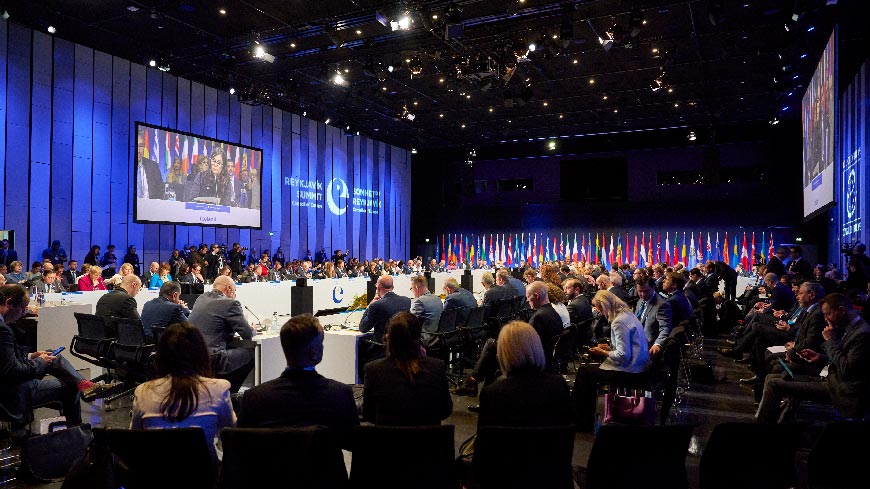
Image: Council of Europe, 4th Summit of Heads of State and Government of the Council of Europe
No youth representatives attended the actual summit meeting. Yet member states and Council of Europe organs recognised young people as crucial stakeholders and equal partners when discussing the future of Europe and of the institution. The Reykjavik Declaration states:
We set the Council of Europe on a new path of increased transparency and co-operation with its stakeholders, with strengthened visibility and sufficient resources. This should include a youth perspective in the Organisation’s intergovernmental and other deliberations as youth participation in decision-making processes improves the effectiveness of public policies and strengthens democratic institutions through open dialogue. We also call for a review and further reinforcement of the Organisation’s outreach to, and meaningful engagement with, civil society organisations and national human rights institutions.
The summit outcome set off a dynamic discussion throughout the institution’s committees and other forums. How can young people be included in discussions on bioethics? What is the youth perspective on torture prevention? In wha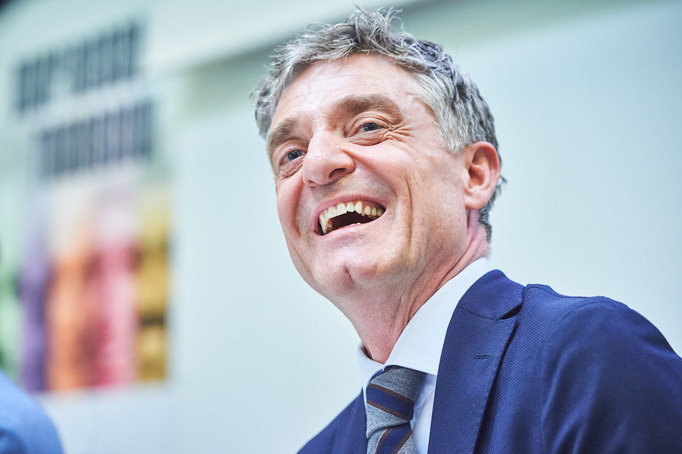
I sat down with Tobias Flessenkemper, Head of the Youth Department of the Council of Europe, to get his views on the process of including a youth perspective in the Council of Europe’s work.
 Tobias, let’s start with what everybody is asking – what is “the youth perspective”?
Tobias, let’s start with what everybody is asking – what is “the youth perspective”?
This is really asking “Why should we care about what young people think?”. This simple question is at the centre of understanding the importance of youth perspectives. Young people are often left out when it comes to decision making on topics that directly impact their lives. They are outnumbered by older generations in politics, who have more experience and resources and hold the seats mandated with decision-making power. Beyond the inequality of distributed spaces, this creates a problem when we say that youth perspectives should be central to all intergovernmental co-operation and deliberations of the Council of Europe, because we do not want to replace representative democracy, but we need to make sure young voices are heard too. It is not just about young people being involved in certain policies; it is about recognising their views, opinions and experiences as crucial for shaping our future together. So, the natural next step is to look at the structures already in place and identify what we can use better to understand and relate to the realities young people in Europe are living through today.
 How are the youth perspective and youth participation related to each other?
How are the youth perspective and youth participation related to each other?
The youth perspective goes beyond ensuring youth participation in certain policy areas. It entails potentially a broader political consideration to fully and truly integrate the perspectives of young people in political discussion. This leads us to ask, “How do you generate youth perspectives?”. The best way to generate youth perspectives is really that young people are placed at the centre of deliberations and negotiations – physically present – through meaningful youth participation. So, a first response to this reflection is that young people themselves generate youth perspectives. However, it is not the only way, because first, young people do not necessarily know, and carry on, the perspectives of others. That is a problem of representativity. But also, what are youth perspectives on a continental or multi-annual scale? What could this mean given that things are moving fast? Youth perspectives on health have shifted dramatically, reaching new pertinence with the pandemic and digitalisation. To one extent they are data. So, there is a need to generate evidence, statistics and various sets of data, and to gather information. The Council of Europe has many instruments to move ahead with this, through participation, consultation, research, studies, opinion polling, exchanges and so on.
 What about the future generations, also mentioned in the Reykjavik Declaration?
What about the future generations, also mentioned in the Reykjavik Declaration?
Ensuring young peoples’ perspectives in decision making must aim for more; it must also prepare the ground for “future making”. It is about their and future generations’ projections. The young person of today is not the young person of tomorrow, and may be as closed off to incorporating other young people’s perspectives as those who are not taking them into account today. We are working with generational cohorts which are fast changing. And the ambition is then to instil into young people of today – who will not be young forever – the idea that youth perspectives are something that they should keep with themselves throughout life and think about continuously. It is a bit like environmental awareness in that sense. It is not that you only do a school project whose premise is “let’s save the planet by not throwing plastic garbage everywhere”, but it should become a habit. It should become a reflex in politics to think about young people and their perspectives.
 What has the response to youth perspectives been from other parts of the Council of Europe so far?
What has the response to youth perspectives been from other parts of the Council of Europe so far?
Responses have been plenty, and they could be described in three clusters. The first category is those who are used to including youth perspectives and say, “Great! More of it – let’s go!”. The second category is like, “yeah, we would like to do something more, but we don’t know how”, or maybe “we need some help”. The third category would be bodies that have not really thought about it at all and even have some doubts about how this can be made actionable. Although, the response overall has been positive and full of curiosity.
Now we are discussing how this can be put into action to bring real change in the way we plan our work and carry it out. We are considering a self-evaluation tool, for the different bodies – also for different sectors of the Council of Europe – which could be part of a new regular standard for policy areas. For this, we can use our four dimensions, which the Joint Council on Youth formulated in Autumn 2023. The youth perspective was then described to be an attitude – to think with youth; an experience – to learn from and with youth; a skill – to participate with youth; and an action – to act with and for youth. This means we can ask questions like “What is my attitude?”, “What do I have skills in? And what skills are missing?”, “Where do I imagine we could act?”, etc. Through these four dimensions, we could shape a nice starting tool to help identify where there are more development needs.
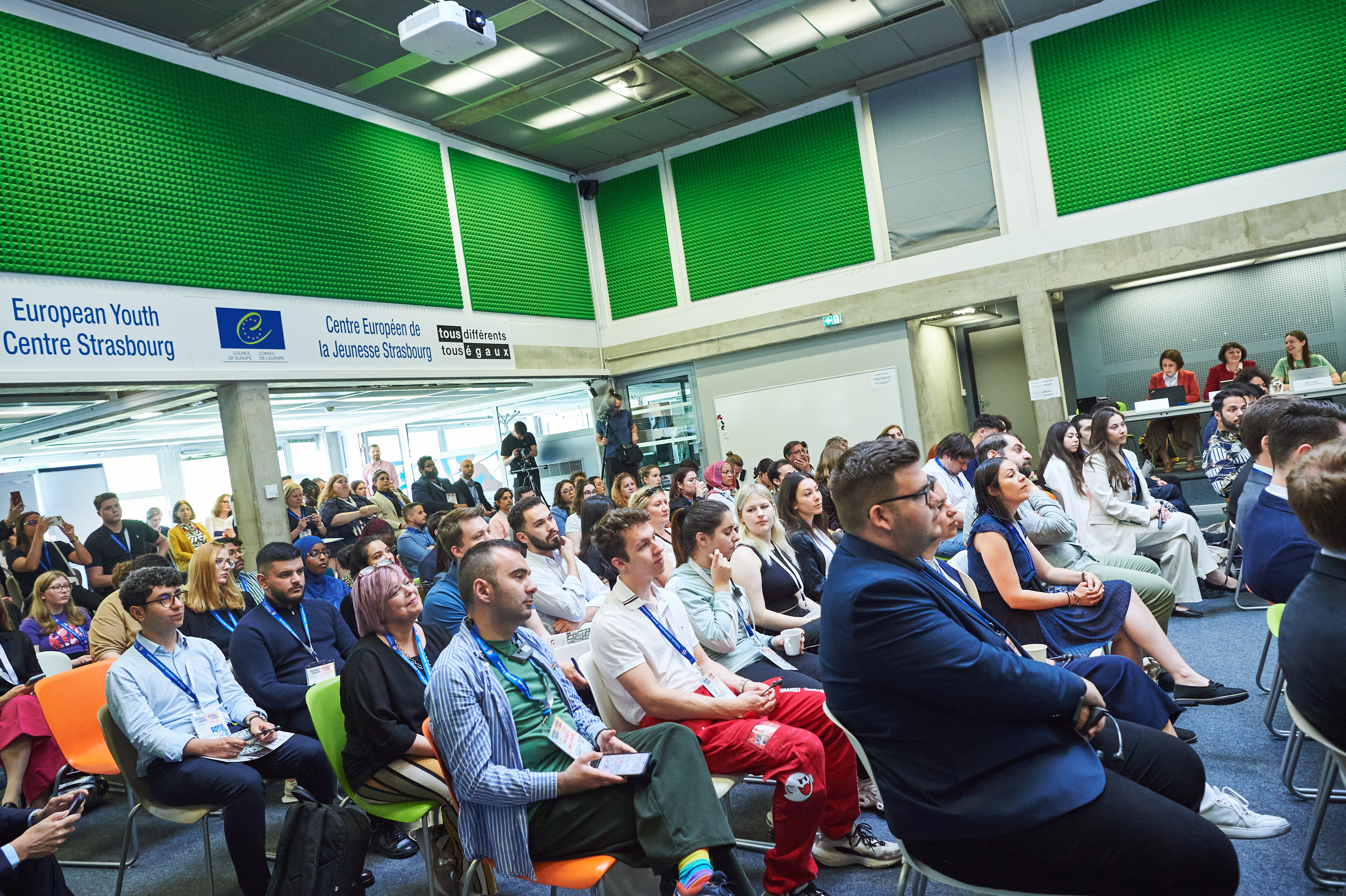
Image: Council of Europe, Confidence in Tomorrow youth event (2024)
 How about doubts and change?
How about doubts and change?
There are a couple of reflexes we should be wary of. Number one is to conceptualise youth perspectives as mainstreaming. Mainstreaming means placing something in the “mainstream” – to be inside the mass, streamlining it. This means that you may no longer be able to see something as its own, which creates a problem of invisibility. I think we need to be cautious about this. At the European level, mainstream is often applied to more legislative processes or distributive processes, which is really not the goal for our work with integrating youth perspectives into the standard-setting, monitoring and co-operation work of the Council of Europe at all stages and by all stakeholders.
The second reflex is to confuse youth perspectives with other kinds of group-specific policy areas, such as children or gender. Here I also would like to invite us to reflect on the differences. Gender for example, is something which is not generational – it is lifelong, and negotiation with individuals about their gender roles and societal roles is socially constructed and never stops, it is not transitory. Child policies are linked to protecting and empowering the early parts of life – meaning the first 18 years. Issues concerning children are mainly rights-based. The youth field is also rights-based, yet more with focus on access to rights during a phase of transition which opens up many rights and sees the individual as moving away from protection to self-realisation and increasingly their own responsibilities. Youth is biologically determined, in the beginning, and socially negotiated at the end. Youth policy is hence centred about notions of citizenship, democracy and how you manage the process of transition to individually defined adulthood. Youth policies aim to prepare people to become successor generations for society. There is some overlap with both gender and child issues, yet focusing specifically on the youth perspective can bring meaningful insights.
 What does this process mean for the youth sector?
What does this process mean for the youth sector?
We are more in demand than ever. All that we do now must be put into the context of the youth perspective. For instance, take the study sessions that are done, take the grants that are being awarded: these are led by youth organisations and young people already. These are events involving youth participation which generate youth perspectives on a broad range of topics. How can we better embed the results into intergovernmental work and other work streams within the Organisation? What needs to be done to prepare everyone, including the youth sector, to go beyond the usual scope and style of discussion? These are the reflections we have to make for all activities that are taking place. Our resources should give us a solid basis for this. As we are saying that youth perspectives transcend, go beyond the activities of the youth sector, they will create a dynamic and a demand for new ways of interacting with young people and understanding youth issues. That raises questions of support: on what is already available from the youth sector, on linking our work to other existing tools to ensure quality, on setting standards for helping people adapt their ways of working, on developing practices to act with the four dimensions. Because what youth perspectives really entail is developing the attitudes, experiences, skills and activities of working with and for young people in meaningful co-operation.
 Can you give some examples?
Can you give some examples?
The youth sector is good at thinking of itself as having all these experiences. There might be a “translation problem”, for other fields must be ready to have the confidence to open up to youth perspectives in their work. And when they do, we need to be mindful of the resources they need. We cannot use the resources dedicated to the youth sector and the resources for young people to cover the demands of every societal issue. That is a challenge to communicate. This problem only becomes bigger when you look at the crisis some of the national youth councils and other youth civil society organisations are going through – with limited resources and limited space to function, how can the youth movements respond properly to the challenges they face? This may create a rift for young people between their wish to become agenda setters and, at the same time, being asked to “follow the agenda”, responding to the needs of others to have youth perspectives. Hence, we also need strong youth organisations and networks to bring the youth perspective in terms of what young people want to the table. When youth organisations are weak, there is a risk of only having selective, and costly, inefficient processes of consulting young people. You risk missing out on reality-based youth perspectives. Instead, you get opinions of young people on the agenda set by older generations, which cuts society from reaching much needed innovation and change.
This may have dire consequences for young people. For instance, the experiences of young soldiers, those who have completed military service at a young age, or young veterans in Ukraine. We must also consider the broader implications of being young and serving in coercive structures. It’s time that we open up discussions around these topics to better understand and address the unique challenges faced by young people in these situations.
I left Tobias at the end of our talk reflecting on what he has said. On a systematic level, we as a society are maybe not necessarily forgetting about young people, but there are many questions to ask if you have the ambition to go beyond what we have currently been doing – both in the youth sector and elsewhere. The initiative of including a youth perspective in a much wider context of the Council of Europe is also a process for co-developing policy together with diverse groups (of young people), who otherwise are under-represented or marginalised in contexts where “youth” is clustered into a giant, shapeless mob. In this respect, youth perspectives are about broadening democracy against the backdrop of democratic backsliding and shrinking civic space, which has been observed in Europe in the last few years.
After this interview, Tobias’s recommendation is a book from Jonathan White called In the long run. The future as a political idea, released this year. There, he marked the quote: “Intensifying democracy makes its failings less threatening, since none need seem so decisive. Strengthening associations that can build commitment over the long term is how the future can be made open and shared”. Tobias notes: this is what the Council of Europe is aiming for: a democratic future open for all, shared across generations, based on youth perspectives and participation.

Alice likes to think about democracy and youth participation.

